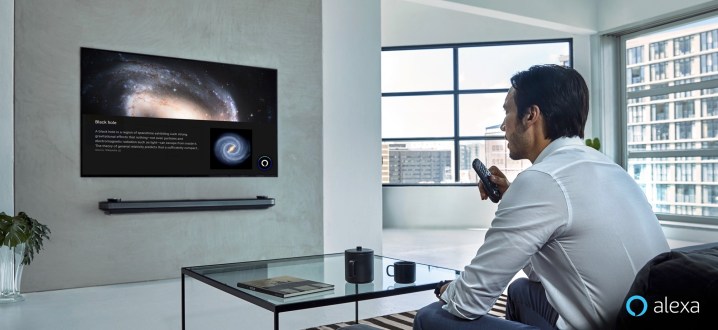
LG announced that its 2019 ThinQ A.I. TVs will eventually support all three major voice assistants, in one form or another. Currently, these TVs embed LG’s own proprietary A.I. and the Google Assistant, but starting this month, Alexa will be added to 2019 ThinQ A.I. TVs, including LG UHD TVs, NanoCell TVs, and OLED TVs. TVs in North America will be the first to receive the update, with Europe and Asia getting it in the weeks to follow.
Using Alexa on an LG TV will require the
The regular microphone button on the remote will trigger LG ThinQ by default, but depending on your settings it will hand-off requests it can’t handle to either
As part of the announcement, LG also took the opportunity to remind us that the planned addition of Apple’s AirPlay 2 and HomeKit technologies is still on the horizon as a midyear update. When this happens, you’ll be able to control a 2019 LG TV via Siri commands through an iOS device or a HomePod.
LG’s strategy of delivering compatibility with all a multitude of voice assistants is a logical approach, and it’s not alone in doing so. Earlier this month,
The question now is, what will happen to companies that only support one of these voice-controlled helpers? Sony’s decision to use Android TV means it’s likely locked into
Updated on May 24, 2019: Added new details around how
Editors' Recommendations
- 2024 LG TVs first look: G4 OLED upgrades and a pleasant webOS surprise
- Google gives LG TV owners three free months of Stadia Pro
- Google Assistant and YouTube Music coming to Galaxy Watch 4
- Why Best Buy just pulled TCL’s Google TVs from stores
- A first look at Google Stadia on an LG CX OLED TV




